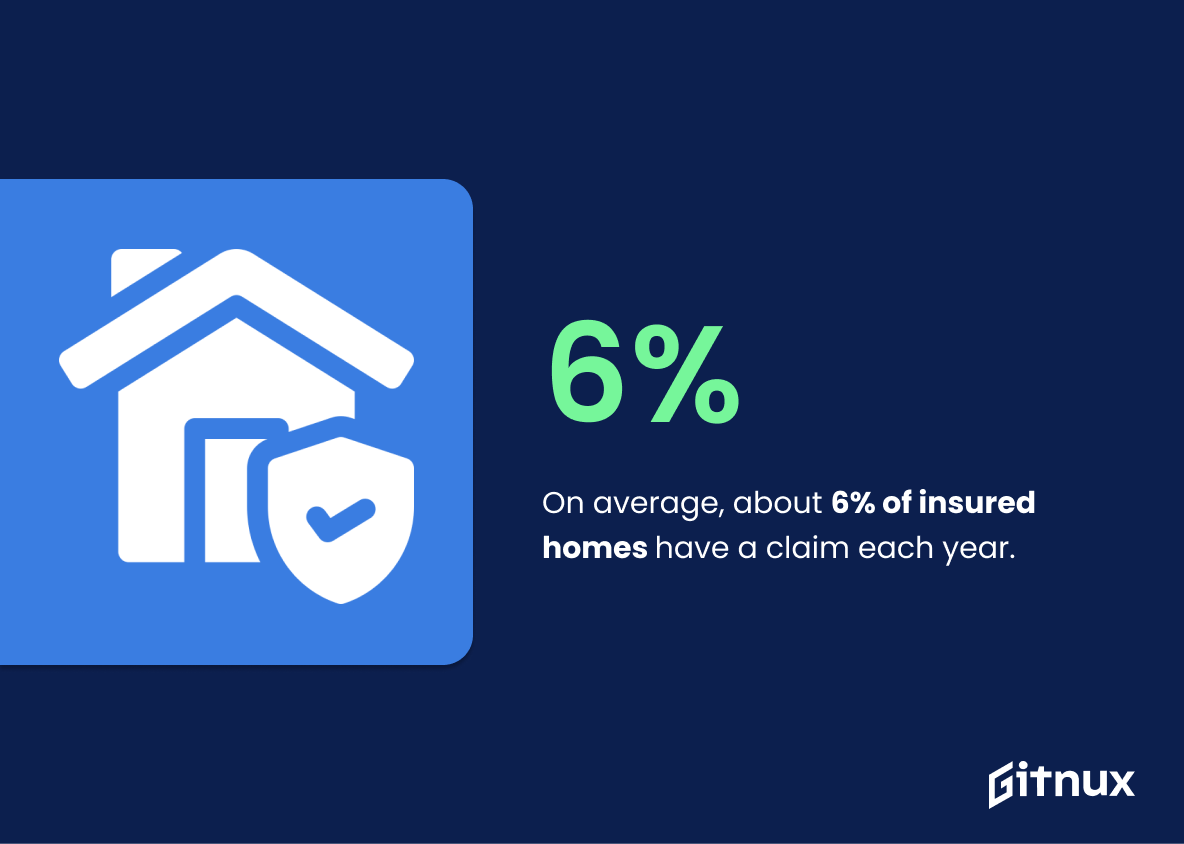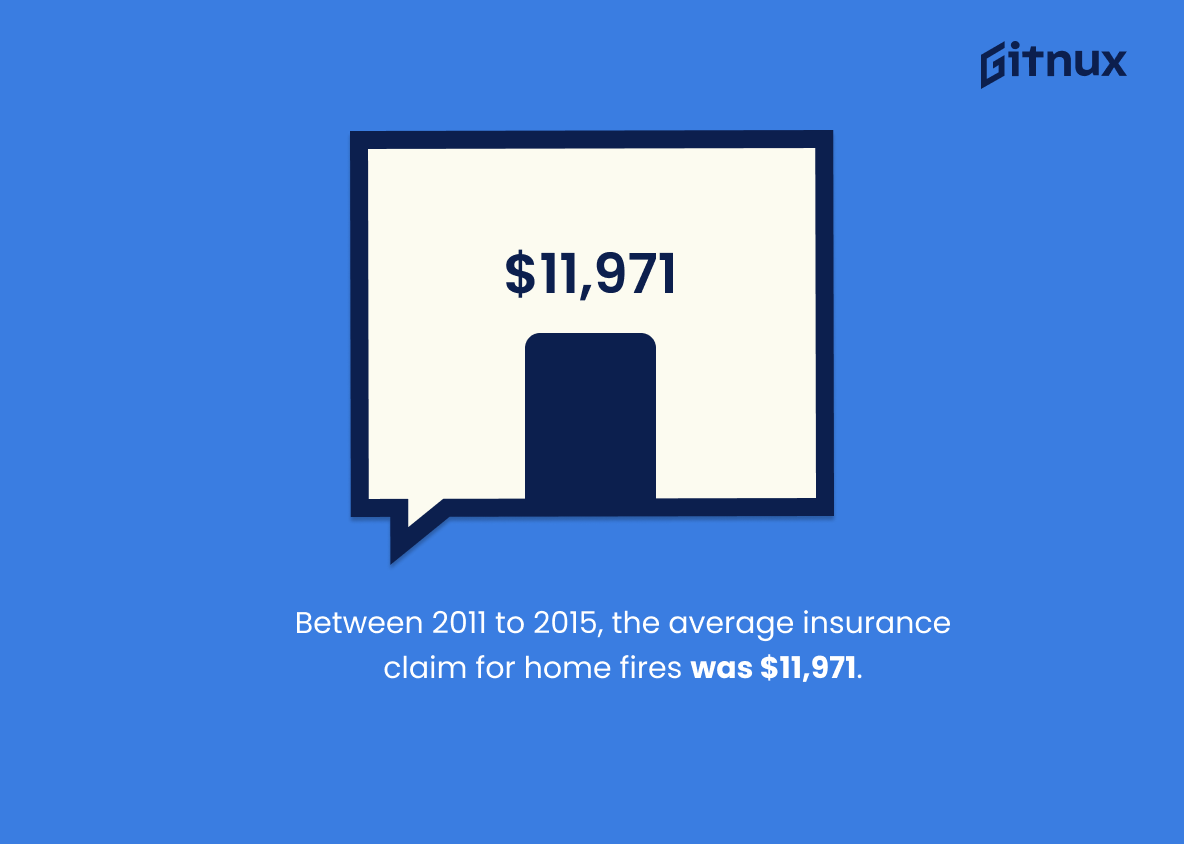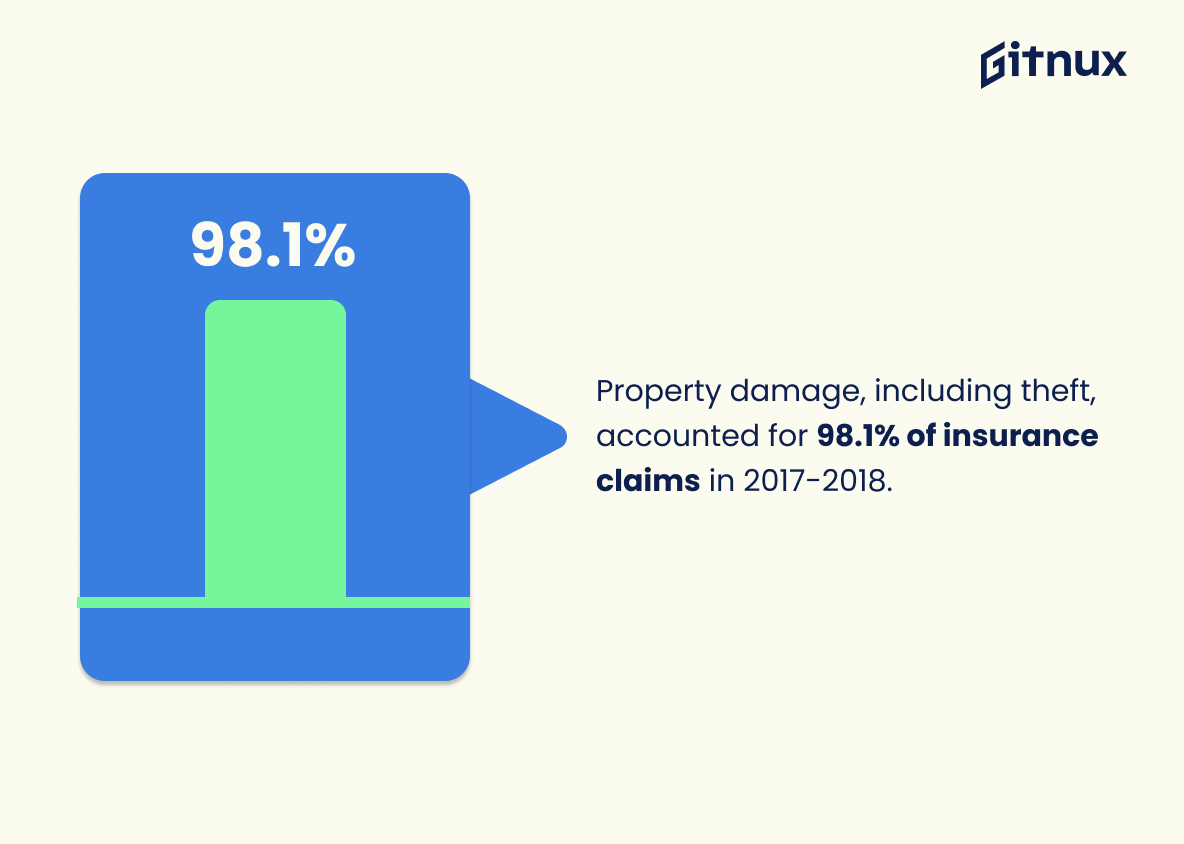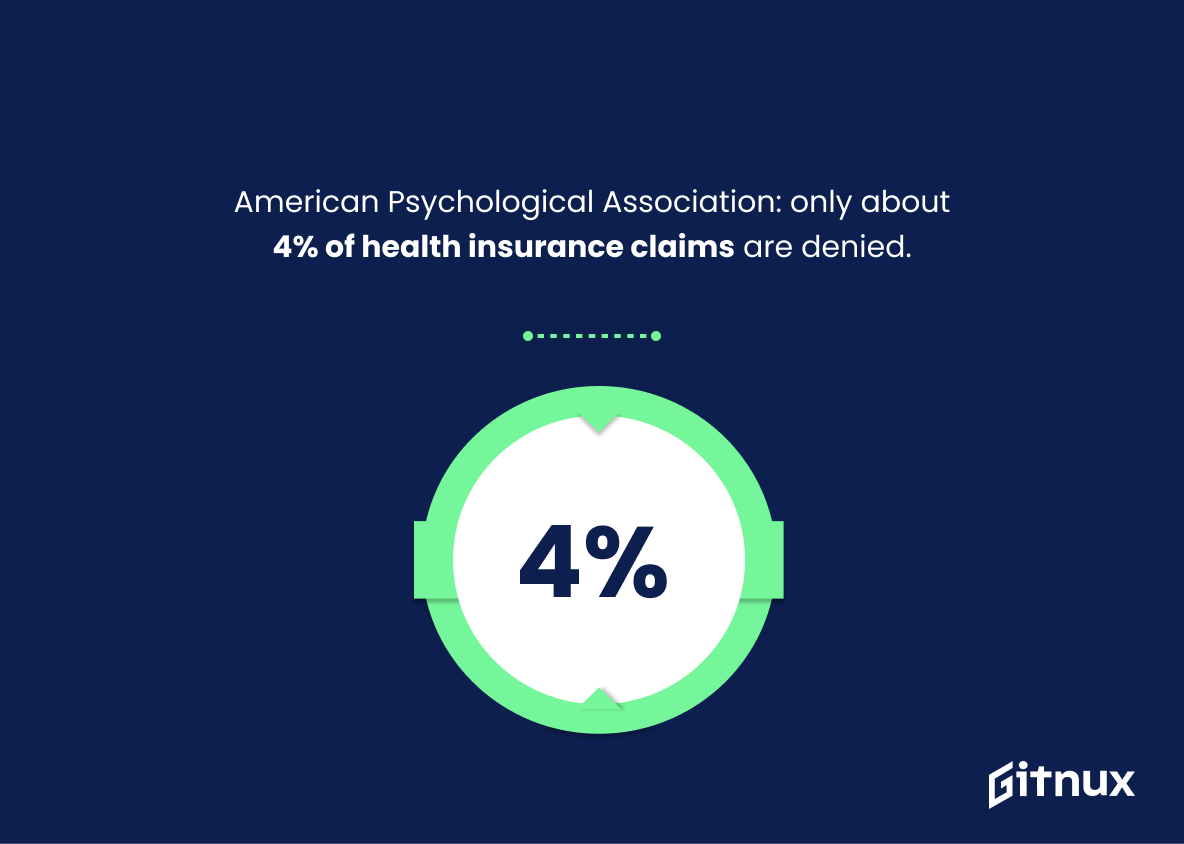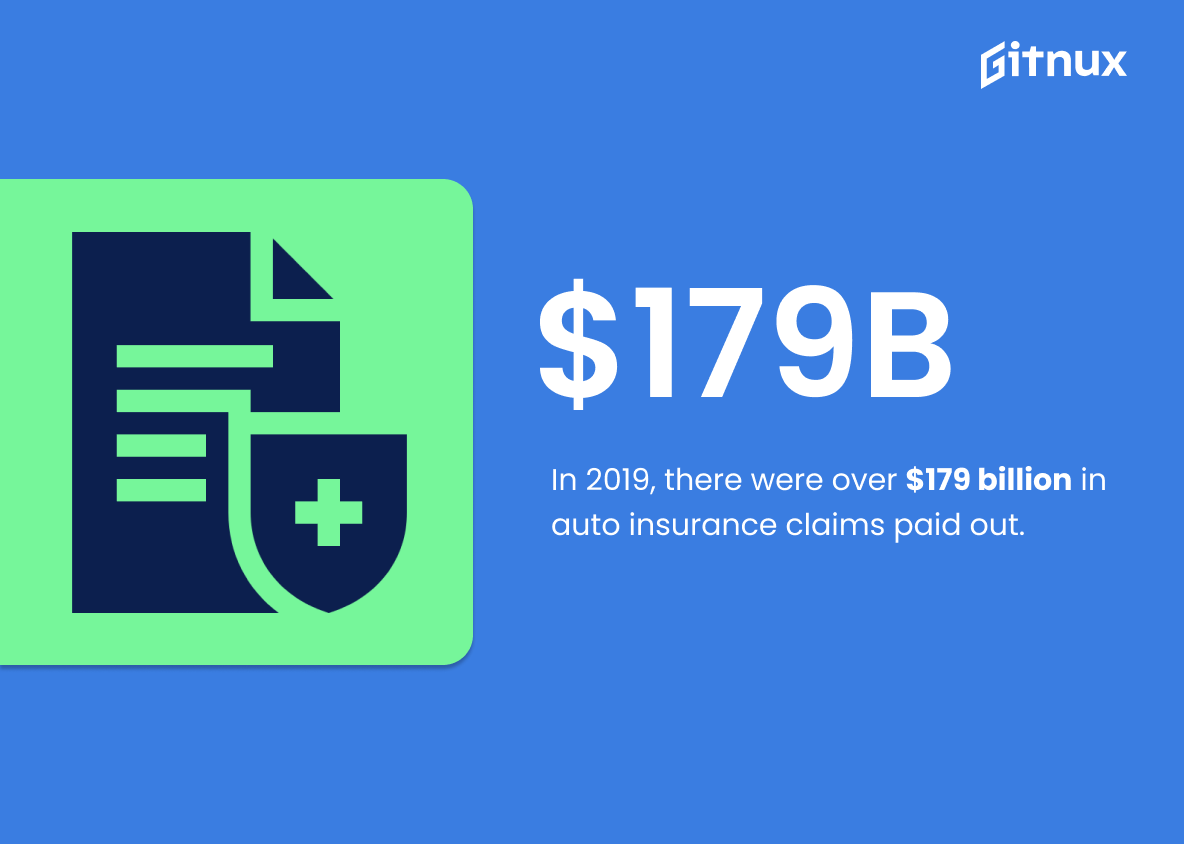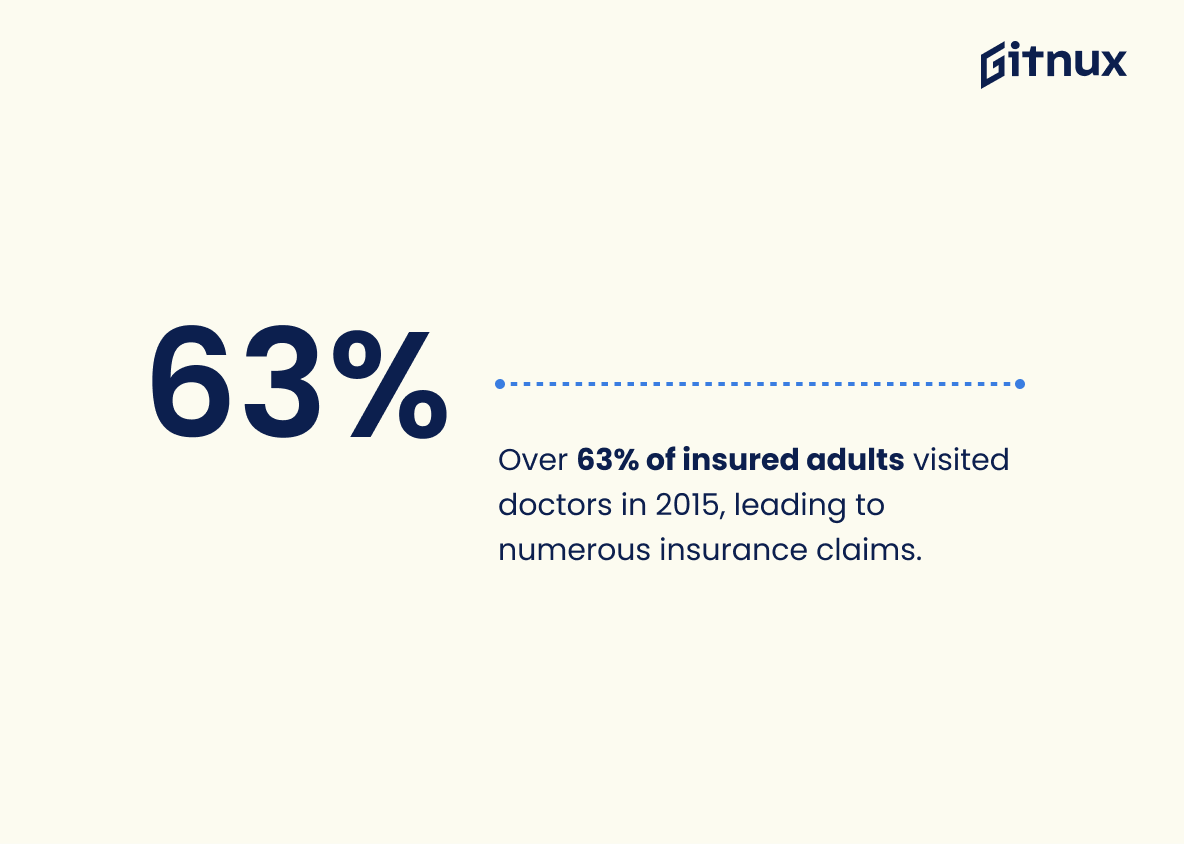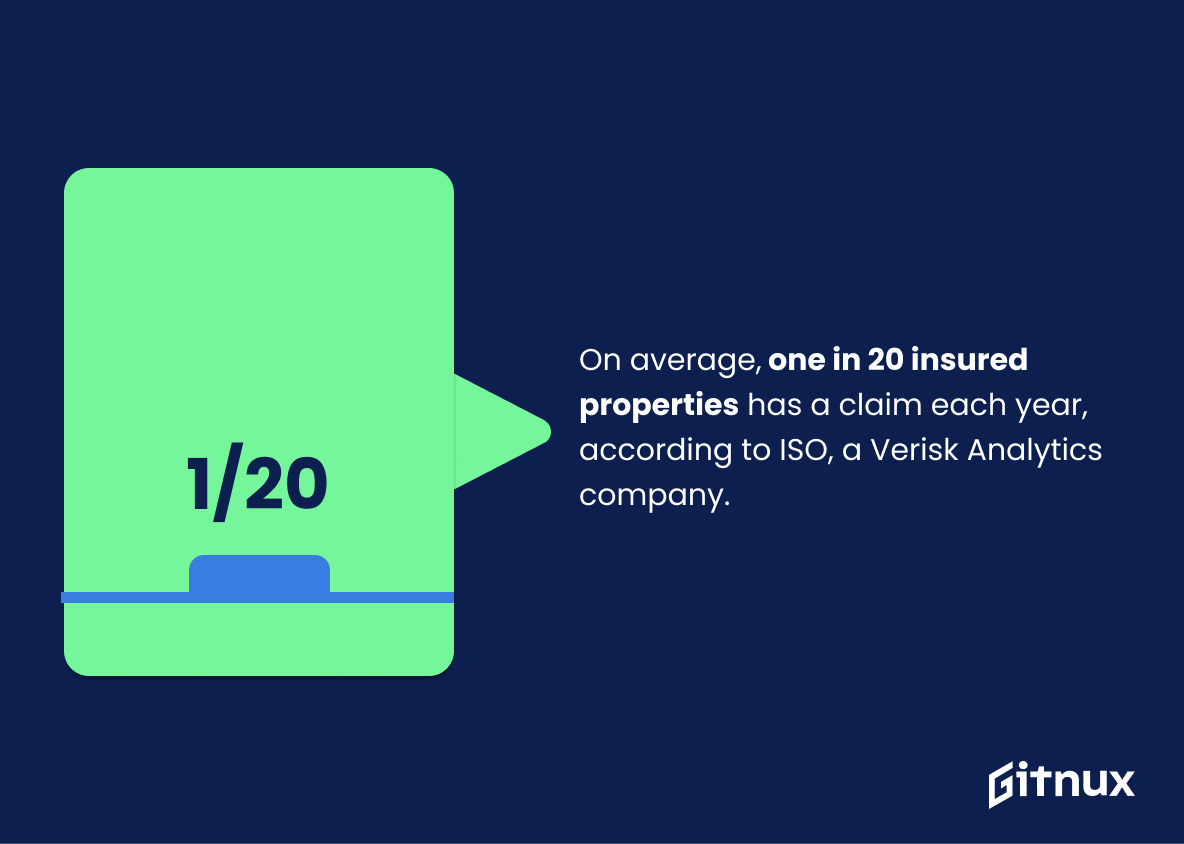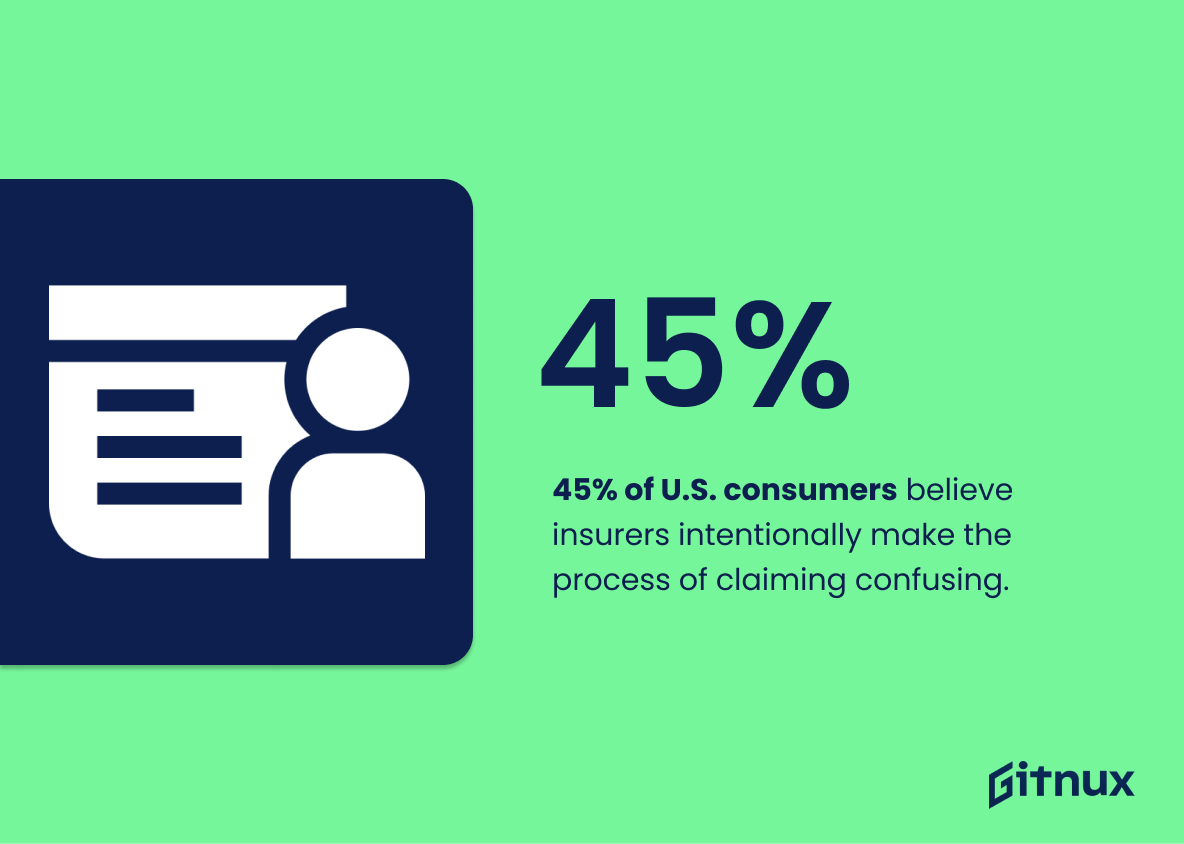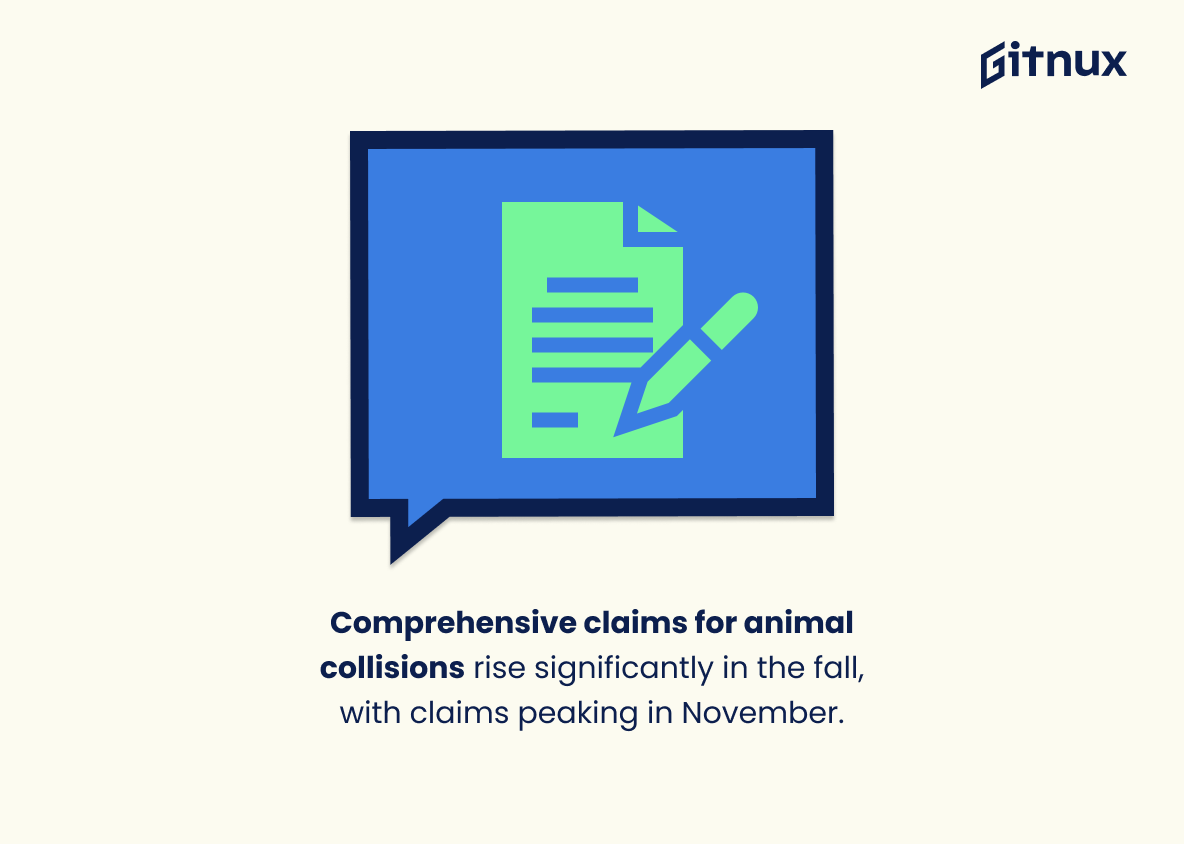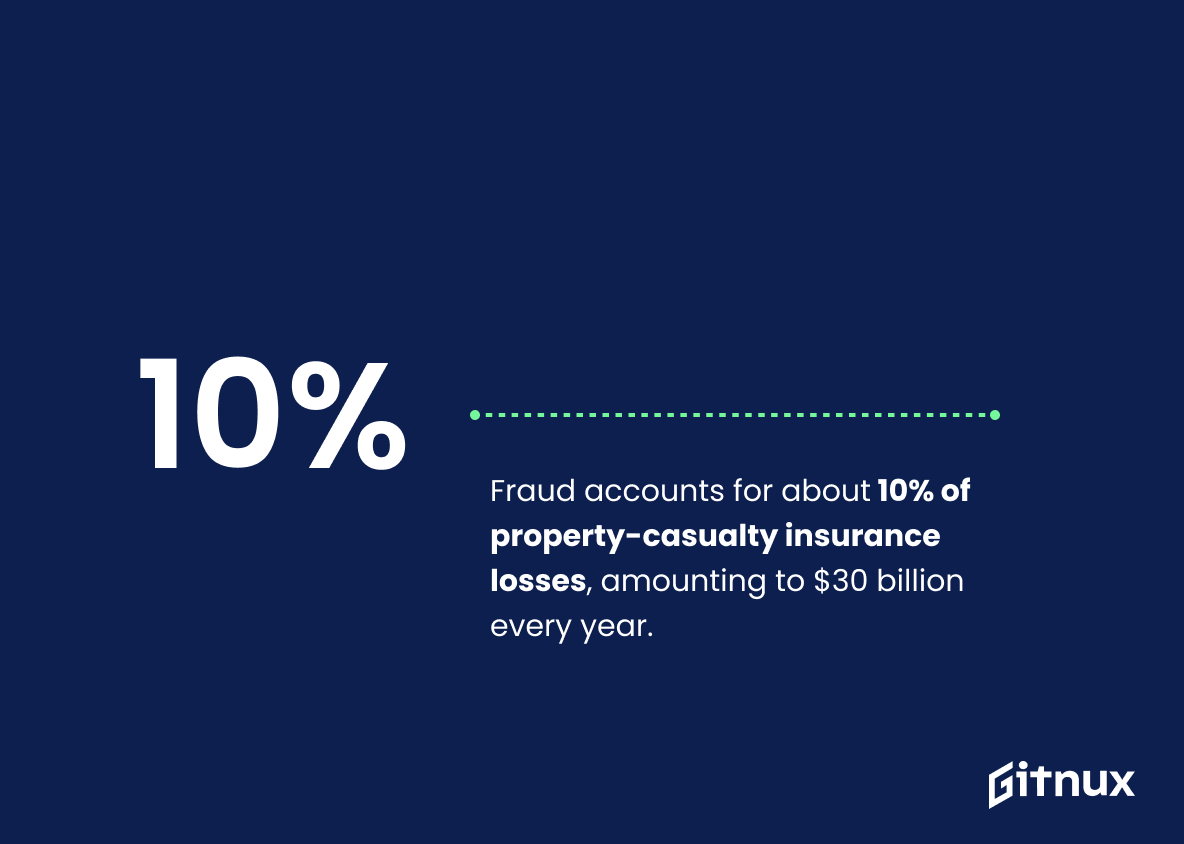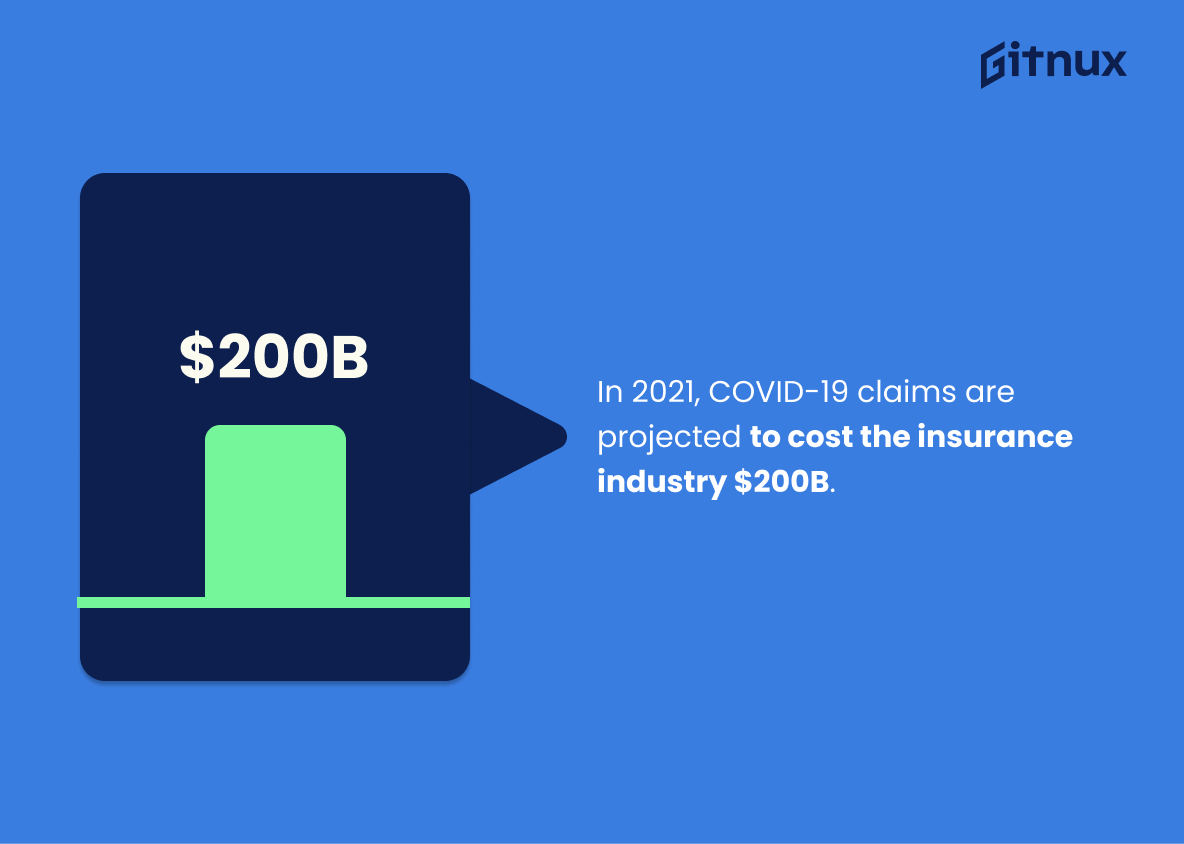Navigating the labyrinthine world of insurance claims requires more than just a basic understanding of the industry. It entails digging deep into the core of insurance claims statistics, a realm teeming with revealing data and game-changing insights that, when interpreted properly, can save policyholders a great deal of time, money, and stress. Welcome to our comprehensive blog post that intends to demystify the complex world of insurance claims statistics, helping you unravel crucial information and make informed decisions. Whether you’re a policyholder seeking to understand claims scenarios better or an industry player aiming to enhance strategy development, this piece holds value for everyone. Let’s dive in and explore what the numbers have to say.
The Latest Insurance Claims Statistics Unveiled
On average, about 6% of insured homes have a claim each year.
Delving into the data, one unearths an intriguing insight: On average, approximately 6% of insured homes lodge a claim each year. To the untrained eye, this number might seem relatively small, a mere drop in the grand ocean of insured homes, you might say. However, the statistic holds a deeper significance in the epic narrative of insurance claims statistics.
Considering this 6% value becomes enormously impactful. First, it helps paint a picture of the overall risk landscape, guiding insurance companies in their policy pricing strategies — the very lifeblood of their business operations. Too high, and customers hesitate; too low, and they risk financial instability.
Secondly, it provides a reality check for the policyholders, offering a sobering understanding that homeownership, while rewarding, likewise carries a non-negligible risk. It whispers a gentle reminder to homeowners about potential dangers lurking in the most comforting place, their home.
Last but not least, this statistic serves as an eye-opener for regulators and policy-makers, compelling them to evaluate and enhance consumer protection measures, pushing towards a future where unexpected house calamities are less financially devastating. So, in truth, this 6% is much more than just a simple number – it’s a cornerstone in the grand design of home insurance.
Between 2011 to 2015, the average insurance claim for home fires was $11,971.
Delving into the realm of insurance claim statistics, a noteworthy narrative surfaces from the period of 2011-2015. Here, the benchmark pegged for an average insurance claim for home fires stands at a significant $11,971. In excavating the meaning behind this figure, it highlights the financial ramifications, emphasizing the crucial role insurance plays in providing a financial safeguard. This quantum of funds not only puts a figure on the impact of home fires but makes a compelling case for having appropriate insurance cover. Thus, this statistic injects a crucial dimension into any discourse about insurance claims, accentuating the importance of adapting suitable insurance plans in mitigating financial blows that could arise from such unforeseen circumstances.
Homeowners insurance claims are often caused by wind and hail damage, with around 34% of claims filed for these reasons.
Underscoring the pertinence of this statistic, it captures the heart of a crucial narrative about homeowners insurance claims. It zeroes in on wind and hail as the leading provocateurs, accounting for around 34% of all claims filed. In a blog post about Insurance Claims Statistics, this figure becomes a focal point. It calls attention to how external factors, especially weather-related instances, exert substantial influence on the propensity of filing homeowners insurance claims. Therefore, insurance companies, homeowners, policy makers, and risk management experts need to pay heed to this data. It could potentially guide decision-making processes, policy adjustments, and proactive protective measures against wind and hail damage, thereby minimizing risks and reducing claim numbers.
Property damage, including theft, accounted for 98.1% of insurance claims in 2017-2018.
Highlighting the statistic that property damage, including theft, accounted for 98.1% of insurance claims from 2017-2018 serves as a potent reminder of the substantial risks faced by homeowners and property holders. It paints a vivid picture of an unexpected yet significant threat, a vital factor for anyone contemplating insurance coverage. The sheer dominance of this category underscores the prevalence of such incidents, drawing attention to a crucial aspect of property ownership that individuals cannot afford to ignore. This becomes especially relevant in the landscape of insurance claims statistics, providing potential policyholders insights into the most common claim, and encouraging them to evaluate and adequately protect their assets.
According to the American Psychological Association, only about 4% of health insurance claims are denied.
Highlighting the statistic shared by the American Psychological Association, we find an intriguing narrative in the arena of health insurance claims. With only 4% of such claims being denied, this datapoint serves as a compelling testimony that majority of health insurance claims are accepted. This can instill confidence in policyholders about the likelihood of their claims being approved, bridging the trust gap often associated with insurance companies. This percentage has significant implications in the broader discussion of how insurance companies operate and their commitment towards ensuring their customers’ well-being, underlining the essential role systematic data plays in unraveling the complex world of insurance claims.
In 2019, there were over $179 billion in auto insurance claims paid out.
Successfully navigating the complex sea of insurance claims can make or break a financial scenario, especially in the context of auto insurance. The striking figure of over $179 billion in auto insurance claims paid out in 2019 serves as a lighthouse, illuminating the sheer volume of money that changes hands in this arena. It beckons readers to understand that accidents are not uncommon occurrences – they are real, frequent, and costly. The enormity of this figure underlines the necessity of insurance and the frequency at which claims are made and paid out. Thus, it stands as an undeniable testament to the importance of being informed and prepared when it comes to automobile insurance and claims.
According to Verisk, insurers spend nearly $50 billion annually on claims processing activities.
Delving into the data-laden realm of insurance claims, it’s fascinating to unpack the epic scale of monetary resources poured into claims processing activities. Verisk reveals a jaw-dropping figure: insurers annually cough up nearly $50 billion on these activities alone. Within the sphere of an insurance claims statistics blog post, this voluminous figure works as a numbing indicator of the crucial nature of claims processing to the insurance industry. From claim validation to disbursement, insurers are constantly in a battle to streamline these processes, demonstrated by this substantial annual investment. This statistic can act as a springboard to discussions around the need for efficiency, cost reduction, and optimization in the realm of claim processing, highlighting potential opportunities in Insurtech to elevate the entire industry. A number this mammoth not only materializes the weighty economic implications at stake but also underlines the essentiality of maintaining high standards in claims processing.
More than 63% of insured adults visited a doctor’s office in 2015, resulting in countless claims to insurance companies.
Delving deep into the buried treasures of insurance claims, the shiny nugget of data that captures attention is that over 63% of insured adults had a rendezvous with a doctor’s office in 2015, a gold mine for insurance companies processing an avalanche of claims. This intriguing statistic, illuminated in the lens of a blog post on Insurance Claims Statistics, offers a multi-faceted perspective.
First of all, it paints a vivid picture of the health trend that the majority of insured adults needed medical attention, perhaps hinting at the prevalence of health issues among the insured demographic. It highlights the importance of having insurance to an array of readers, from the uninsured debating the worth of an insurance policy, to policymakers mining data to model health trends and implications.
Secondly, it illuminates the enormous workload insurance companies shoulder dealing with a deluge of claims. This surreptitious look under the hood of the insurance industry helps stakeholders in the industry to analyze their claim processing efficiency, capacity, and the need for automation or digital transformation initiatives.
Lastly, the data is a pivotal compass directing insured adults towards a careful inspection of their insurance policy details. Knowing the high likelihood of visiting a doctor’s office, insured individuals can be prompted to understand their coverage better, ensuring smooth claim processes when the time comes.
Therefore, this 63% statistic stands like a lighthouse guiding various entities in their decision-making process depending upon their relation to the insurance industry. Indeed, the sea of Insurance Claims Statistics holds fascinating revelations such as this.
On average, one in 20 insured properties has a claim each year, according to ISO, a Verisk Analytics company.
Peeling back the layers of the insurance industry, the statistics emerge as intriguing storytellers, casting light on the forces at work. Take for instance the compelling narrative harbored within this one statistic: ‘On average, one in 20 insured properties has a claim each year’, as cited by ISO, a Verisk Analytics company.
This opens up a window into the unpredictable landscape of property-related risks, serving as a stark reminder of the omnipresent undercurrent of uncertainty. Indeed, with a 5% annual claim rate, it underscores the criticality of insurance to provide a safety net against potential setbacks, each property carrying with it the susceptibility to become that ‘one’.
Moreover, this data point chisels out a clear perspective on the sheer magnitude of claims the insurance industry processes each year. It’s a testament to their indispensable role in providing financial relief amidst the property damages and losses.
In conclusion, attempting to grasp the intricate dynamics of insurance claims without this statistic would be akin to navigating the ocean without a compass – possible, but decidedly more difficult.
In 2020, the number of insurance claims for bike crashes in Holland increased by 27%.
Drawing our attention towards the noteworthy upsurge of bike crash insurance claims in Holland in 2020, this 27% growth speaks volumes about the evolving relationship between risk and insurance in today’s world. As we delve deep into the world of insurance claims statistics, this particular increase reveals how both the insurance industry and bike riders are grappling with emerging hazards. The information illuminates the crucial role proper insurance coverage plays in providing financial safeguards for cyclists while influencing policy direction of insurance providers. Consequently, this trend is not just a number but is intimately connected to the safety, security, and financial health of the biking community in Holland, making it a vital aspect of our discourse on insurance claims statistics.
45% of U.S. consumers believe insurers intentionally make the process of claiming confusing.
Delving into the intriguing realm of insurance claims statistics, one insightful nugget jumps to the forefront – an eyebrow-raising 45% of U.S. consumers harbor the sentiment that insurers intentionally obfuscate the claim process. From a reader’s perspective, this statistic sets a visceral tone, painting insurers as possible antagonists in the grand narrative of insurance claims.
This figure doesn’t just act like a spicy footnote. It kickstarts a discourse on the complexity of insurance claims, encouraging readers to critically analyze whether this alleged knottiness is a deliberate strategy by insurance companies or merely a consequence of the intricacy of insurance processes.
Moreover, it has a resonance that extends well beyond the borders of the insurance industry. In commanding the skepticism of nearly half of U.S. consumers, it ought to spark an exigent realization among insurers about the urgent need for simpler, more transparent claim procedures. The statistic’s significance also seeps into policy-making corridors, inspiring regulations to amp up the comprehensibility and fairness in the world of insurance.
In essence, it’s the spark that lights up a blog post on Insurance Claims Statistics, guiding readers through a labyrinth of fiery discussions, hearty debates, and sensible takeaways.
Comprehensive claims for animal collisions rise significantly in the fall, with claims peaking in November.
Analyzing the key spotlight on this statistic, it transforms our understanding about Insurance Claims Statistics particularly referring to comprehensive claims related to animal collisions. It particularly illuminates the seasonal pattern, allowing stakeholders to link the surge in claims to the fall season, reaching its zenith in November. This data further plays a primary role in risk assessment, policy pricing and claims management for insurance companies. Meanwhile, for policyholders, such insights are helpful in being alert during these peak months, thereby potentially reducing accidents and subsequent claims.
Fraud accounts for about 10% of property-casualty insurance losses, amounting to $30 billion every year.
Unveiling the dark side of the insurance world, one must be conscious of an astonishing fact: around 10% of property-casualty insurance losses are attributed to fraud, equating to a mind-boggling $30 billion each year. This statistic holds considerable weight in the dialogue around Insurance Claims Statistics, adding a layer of complexity to the discussion.
Firstly, it underlines the prevalent issue of fraud within the insurance industry, implying the necessity of sophisticated detection systems and careful scrutiny of claims. It reveals that an alarming portion of insurance losses is not from legitimate, unforeseeable accidents or disasters, but rather deceitful manipulations.
Secondly, the immense amount of money lost yearly to fraud impacts premiums for honest insurance users. The insurance companies seek to mitigate these losses, often leading to increased costs for consumers, which can detrimentally distort understanding of average claim amounts within the sector.
Finally, this figure shines a light on opportunities for improvement within the industry. Whether by tightening security measures, enhancing scrutiny or investing in more advanced fraud detection technologies, the industry has potential to turn this staggering loss into savings for honest policyholders and improvements in general operation efficiencies.
Thus, shining the spotlight on the mammoth $30 billion lost annually to fraud serves to educate, caution, and inspire reforms within the insurance landscape, giving the statistic a crucial role in the narrative around Insurance Claims Statistics.
In 2021, it has been estimated that the insurance industry will lose $200 billion due to COVID-19 related claims.
Highlighting the projected $200 billion in COVID-19 related claims in the insurance industry for 2021 paints a vivid portrait of the transformative impact the pandemic has had on the sector. The staggering figure not only underscores the financial toll, but also signals potential shifts in insurance practices and policies. In the realm of Insurance Claim Statistics, this estimation serves as a compelling centerpiece. It pushes readers to ponder upon the scale of claims, the resilience of the industry, and the future of insurance post-pandemic. More importantly, it triggers essential discussions around healthcare coverage, business interruption policies, and crisis management in the insurance landscape. By emphasizing on this statistic, the blog post compels readers to explore attitudes, trends, and strategies in insurance claims amidst a global health crisis.
Conclusion
Understanding insurance claims statistics can significantly aid in making informed decisions about your insurance needs. These figures shed light on the prevalence of various types of claims and the risks surrounding them. They highlight the importance of having an appropriate insurance cover to protect ourselves and our properties. Always remember that the primary purpose of insurance is not to make profit, but to safeguard our interests against unforeseen circumstances. Fully comprehending these statistics can ensure that you are adequately protected and may even aid in reducing your premiums by helping you identify areas where you might be over-insured or under-insured.
References
0. – https://www.www.statista.com
1. – https://www.www.verisk.com
2. – https://www.www.nfpa.org
3. – https://www.www.cyclist.co.uk
4. – https://www.www.bbc.com
5. – https://www.www.iii.org
6. – https://www.www.ey.com
7. – https://www.www.apa.org
8. – https://www.www.fbi.gov
9. – https://www.www.statefarm.com
10. – https://www.www.cdc.gov
